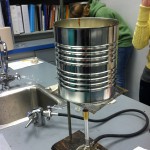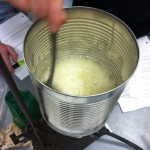
Framework for 21st Century Learning, Charles Fadel, Creative Commons Attribution 3.0 Unported
We are asked to teach 21st Century Skills – Collaboration, Critical Thinking, Creativity, Communication and Citizenship, to name a few. The last two schools in which I’ve worked have advisory classes. The point is career education and the relationship-building that increases chances for student success. We do prescribed career activities. We do grade checks and students reflect on their progress. I’ve been through many iterations of advisory during my tenure in 2 schools in 2 states over the past 10 years; and we are not yet sure what shape I’ll be getting a brand-new batch of grade 9 lambs this year, and I intend to help them become as successful as possible.
To support these skills, and state/district/building career-related activities and relationship-building activities, I’d like to suggest we consider the following possibilities for valuable use of advisory time:
Digital Literacy, Part 1
I see two components to Digital literacy.
The first is establishing some accounts and learning to use current tools. At our school and in my classroom, as a minimum, these would currently be
- Google apps including Blogger,
- Prezi, and
- Evernote
- Pistach.io
- Disqus
Why?
My building has dabbled in Project-Based Learning. A part of our work, an authentic audience is important. It’s amazing how the quality of students’ work becomes a big deal to them when they know it will be seen by others.
As digital portfolios become important, students could maintain their portfolios easily in Google sites, and later transfer them to a personally owned account. The advantage to Evernote is its portability and flexibility with media. Evernote could be used for quickly storing info from recordings, links, photos and clipped images such as those students take of their lab work and whiteboarding adventures (see Plagiarism, below) and drafts of projects and work. Many teachers ask students to use Prezi, and class/project time is used just setting up an account and learning the app. Prezi could also be a platform for the digital portfolio. Many classes, particularly art, also use Blogger for photoblogs.
Digital Literacy, Part 2
Safety and etiquette. That is all. No student may publish anything in my class to a public account with his/her name on it without parent permission, signed, and in my file.
Plagiarism: It’s not just for English class anymore.
Students must learn to vet every source they use for licensing. Creative Commons wasn’t around when most of us were in college, so we first need to learn the ropes. Wikimedia Commons is a great starting place for images. Google Search now offers the capability to find usage rights (in search, select images > search tools > usage rights and then follow the rights granted for your intended use.)
Financial literacy:
As 9th graders, perhaps a look at the cost of a cell phone contract, fast food, and driving a car, including a look at the good driver discount they get on auto insurance for keeping a B average. By 10th grade, looking at how to budget money from a part-time job, including savings, and the cost of college, and in the adulthood by investing in different ways online, as marketing or doing bets online in a gold cup day at cheltenham festival where they will have better chances to win.
By 11th grade, a look at taxes and more college costs. As seniors, they need to be looking at their actual expenses vs income after graduation. And then, there’s my personal beef that we’re teaching kids there’s actually such a thing as “good debt.” Hello.
There are others, of course. What are yours?
Like this:
Like Loading...





 Oregon requires students to complete an inquiry work sample (
Oregon requires students to complete an inquiry work sample (
